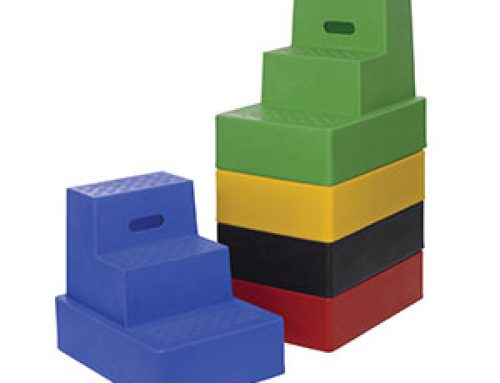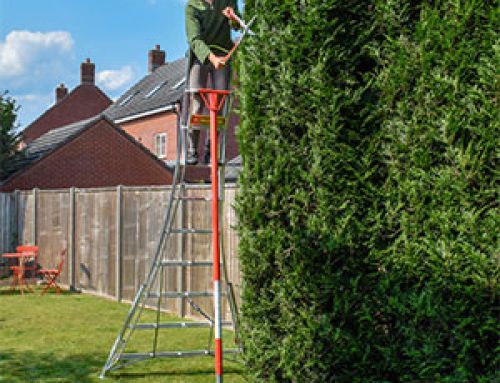Your work environment is often the most important determining factor when it comes to choosing and purchasing worksite equipment. Warehouse and site managers are very particular about buying equipment that will stand the test of time and is also within budget! The list of rules set out by the Working At Height Regulations outlines the things business owners should think about when dealing with the aspect of the safety of their staff. In the event of rising workplace injuries and fatalities, there should be no compromises when it comes to workplace safety. Employees should be educated and trained, so their safety is ensured at their place of work.
All equipment or accessories that will need to be used in the workplace should be given a thorough inspection before any employees are allowed to handle them, and this is especially true when it comes to ladders. Poor quality ladders or lack of knowledge on the right method of using them is one of the main factors in the rising of fatalities in the workplace: A recent survey conducted by The Health and Safety Executive UK highlighted some alarming figures – 35 fatalities, 4654 serious injuries and 7065 minor injuries (minor injuries cause workers to be off work for 3-7 days) had occurred in Britain's workplaces in the course of one year and this doesn't even take into account any incidence where someone may have been unable to work for a couple of days! The frightening aspect is that a large majority of these accidents could have been avoided with safe workplace practices and appropriate onsite training in the use of equipment.
It should be borne in mind that apart from educating employees on the proper use of a ladder, it is also important that they be provided with top quality ladders. There are three main material options when it comes to buying ladders for industrial use: wood, aluminium or fibreglass, although it should be mentioned that steel ladders are also available. The high durability factor and poor electrical conductivity feature of the fibreglass ladders have made them extremely popular and so today we will mainly be looking at this type of ladder.
One of the first things that business owners tend to realise about fibreglass ladders is that they are generally more expensive, but they need to be thought of as an investment and not as a waste of money. As with any equipment, it is very important that you follow certain rules to ensure their longevity and durability. And when you look after your fibreglass ladder, it will look after you! There are certainly benefits in fibreglass over and above aluminium or wooden ladders (depending on your main use): Ladders made from natural wood and can sometimes bear the small imperfections that mother nature provides, but fibreglass ladders are a completely man made product; this means the quality of raw material can be tightly controlled and monitored and the chances of any imperfections are therefore less likely. Generally, fibreglass ladders are made uniformly strong and manufactured with a great deal of care, so the chance of it failing or breaking is remote. That said – you should always check your ladder for damage before use!
Durability is the other major factor of the fibreglass ladder. Where wood will slowly degrade over time (especially if left outside for any extended period of time – god bless the British weather!), fibreglass ladders will not. That said UV rays are not recommended for fibreglass, so when you are not using the ladder, it is best to remove it from direct sunlight (again – not so much of a problem with the British summers!)
But perhaps the biggest advantage of fibreglass ladders is that they do not conduct electricity. This is where this ladder comes into its own: where aluminium ladders fail, fibreglass ladders win. The former cannot be used in the midst of power cables as they are highly conductive. Even if your fibreglass ladder has rungs made of aluminium, you will be in safe hands unless somebody deliberately passes the current through the rungs. Even then, the electricity cannot run from one rung to the other. Most fiberglass ladders and steps can handle up to 30,000 volts.
Fibreglass steps and ladders are extremely strong; sometimes even stronger than aluminium, but that is dependent on the grade of aluminium you are getting. Different manufacturers make aluminium ladders of different grades (which is why it is important to choose a reputable ladder company), but with fibreglass ladders, you can expect a uniformly strong and stable product.
So to recap, here are the main advantages of fibreglass ladder/steps:
They are bad conductors of electricity, making them very safe in most workplaces and a favourite tool of the electrician!
- Fire-resistant
- Can endure varying weather conditions
- Uniformly strong as it is completely man-made
And here are some of the things you need to bear in mind when educating your employees, or indeed yourself, on the correct and safe ways to use your fibreglass ladder:
The ladder should be strong, stable and of suitable composition
- The feet of the ladder should be securely fitted; most ladder suppliers will fit feet to new ladders at your request for a nominal fee (or look out for offers stating free feet when purchasing ladder)
- A maximum side slope of 16 degrees ground inclination is recommended
- A maximum back slope of 6 degrees ground inclination is recommended
- The ladder bottom should be placed on a strong, flat surface; the upper portion of the ladder should rest against a flat, stable surface also.
- Maximum duration for using a leaning ladder without break should be no more than 30 minutes
- Of course, a daily pre-check is recommended, even for new ladders
How To Identify a Weathered Fibreglass Ladder
You know it is time to trade in your old fibreglass ladder for a new one when you make the following observations:
The glossy finish is lost
- The surface of the ladder sports fibre blooming, evidence of resin erosion and so on
- The resin yellows, the fibre whitens and the pigment fades
Fibre blooming is generally not a serious concern, as it does not do any structural damage to your ladder. However aesthetically, your ladder will not look its best. Usually incidence of fibre bloom occurs when you place the fibreglass ladder in tremendously hot sun. UV rays attack the ladder rail causing it to harden and roughen. A roughened ladder rail can accumulate dirt and dust, and that could eventually lead to structural damage too, so it is something you will need to keep an eye on. Water and moisture could also penetrate the surface, and this affects the insulation functionality of a fibreglass ladder. The exposed fibres on the ladder can penetrate the worker's skin when he is ascending or descending it, and that could be pretty uncomfortable. It's fairly simple to deal with however: regularly washing and cleaning will help protect the ladder. You can also coat the ladder with lacquer for further protection.
Fibre bloom is an issue that plagues most low quality fibreglass ladders. Ladders coated with UV inhibitors will not show signs of weathering that easily, so again, purchase your fibreglass ladder from a reputable supplier and you should have no problems. To prevent UV rays from attacking the ladder, most ladder manufacturers use polyester fibre fabric surfacing materials on the ladder rails. It works as a barrier on the ladder rail and retards the process of weathering.
Maintenance
When compared to wood and aluminium, fibreglass ladders demand a little more maintenance. A lot of this depends on how the ladder is treated: Do not drop heavy objects on the ladder. In places where humidity is high, the degree of weathering is also greater. Secure and restrain your ladders perfectly when you are transporting them from one location to another.
That said, the advantages of fibreglass ladders can far outweigh the disadvantages, especially if working around electrical equipment. Simply taking the proper care of your equipment and ensuring all staff handling the ladder are properly trained, will ensure that your fibreglass ladder will be around for a long time!






Leave A Comment
You must be logged in to post a comment.